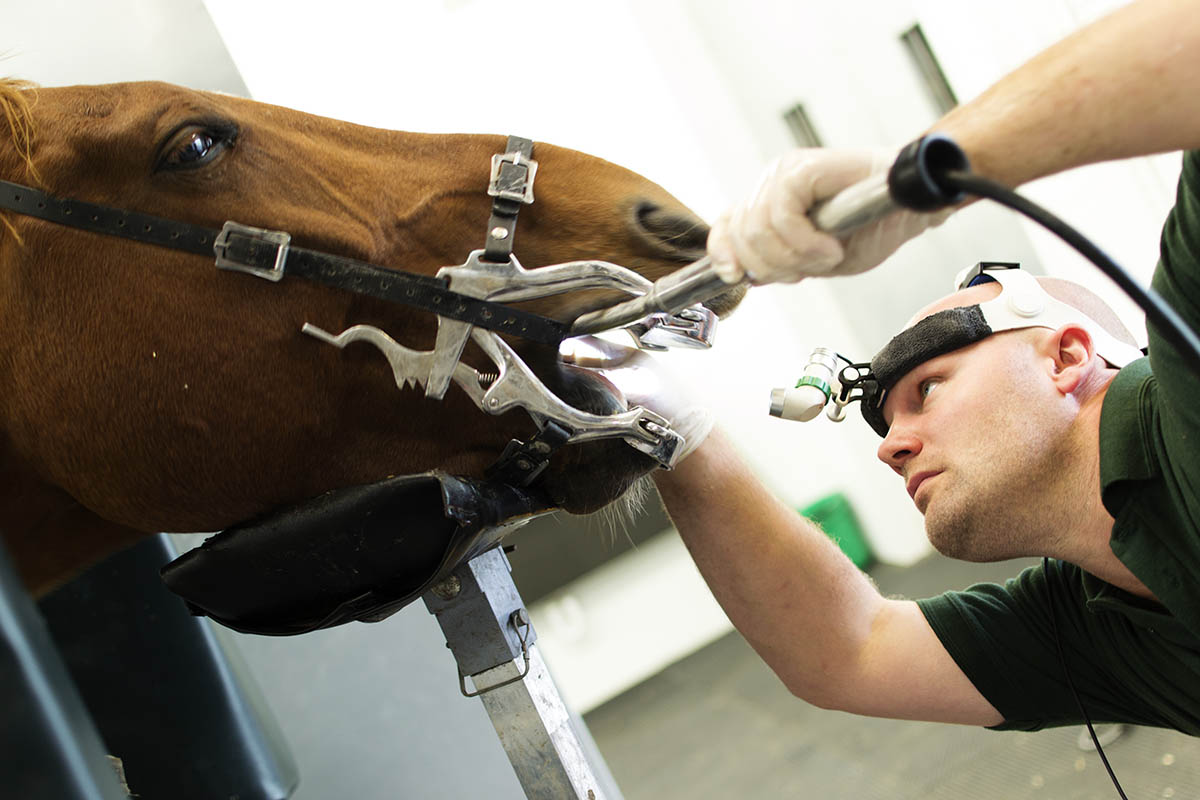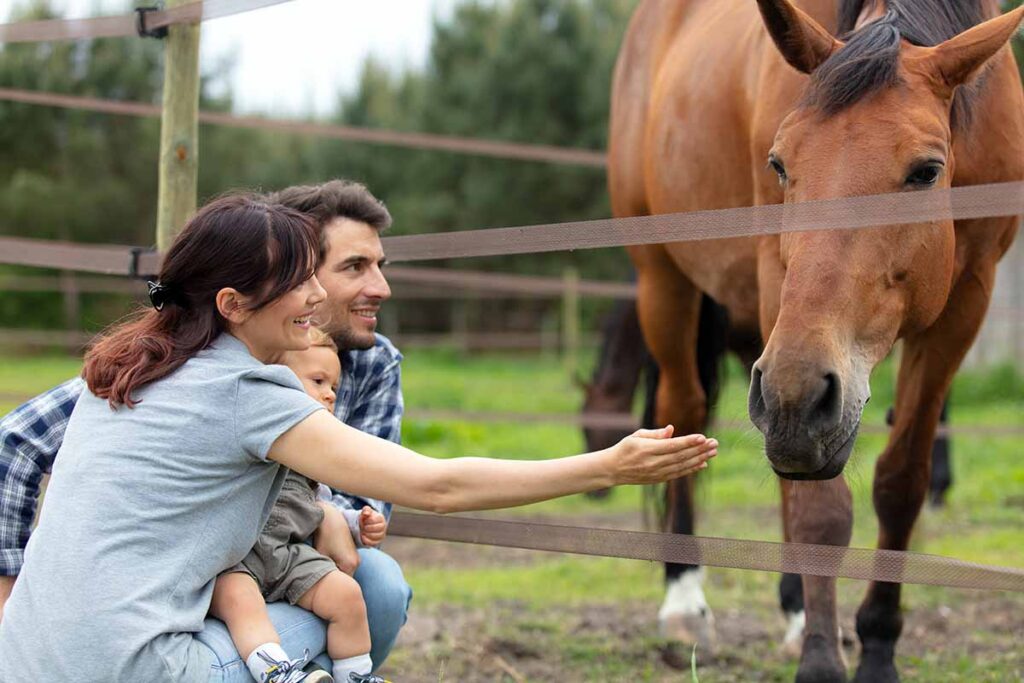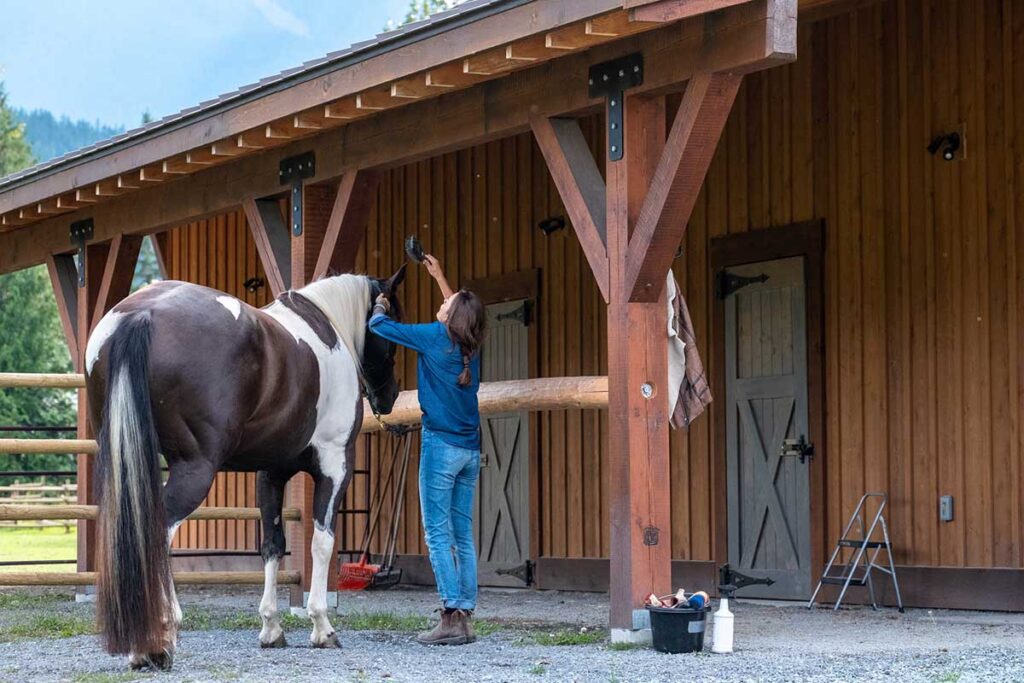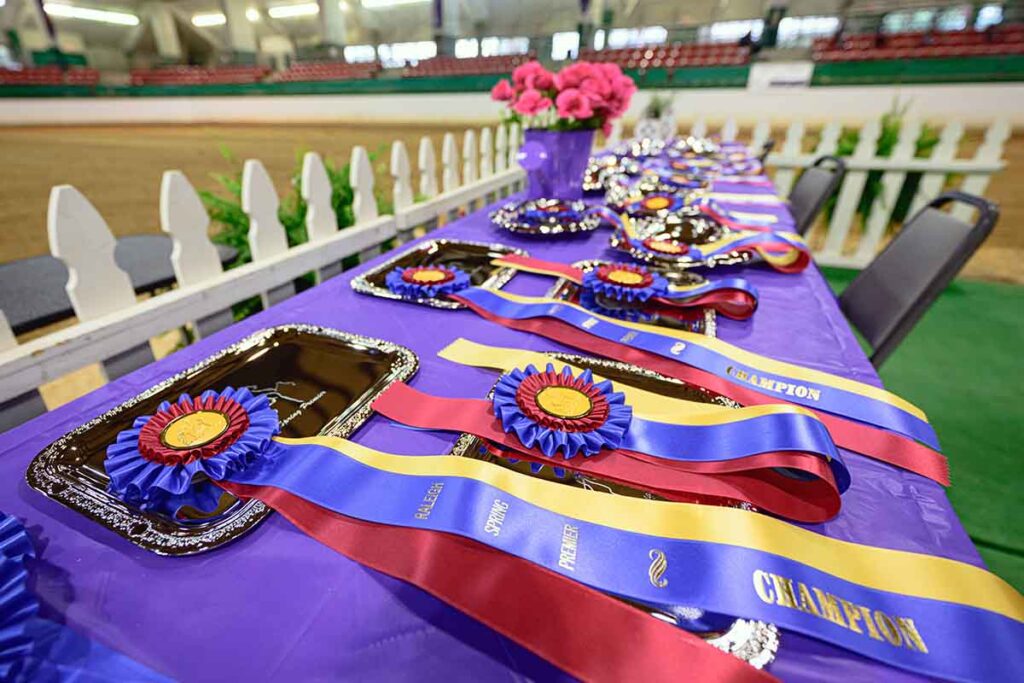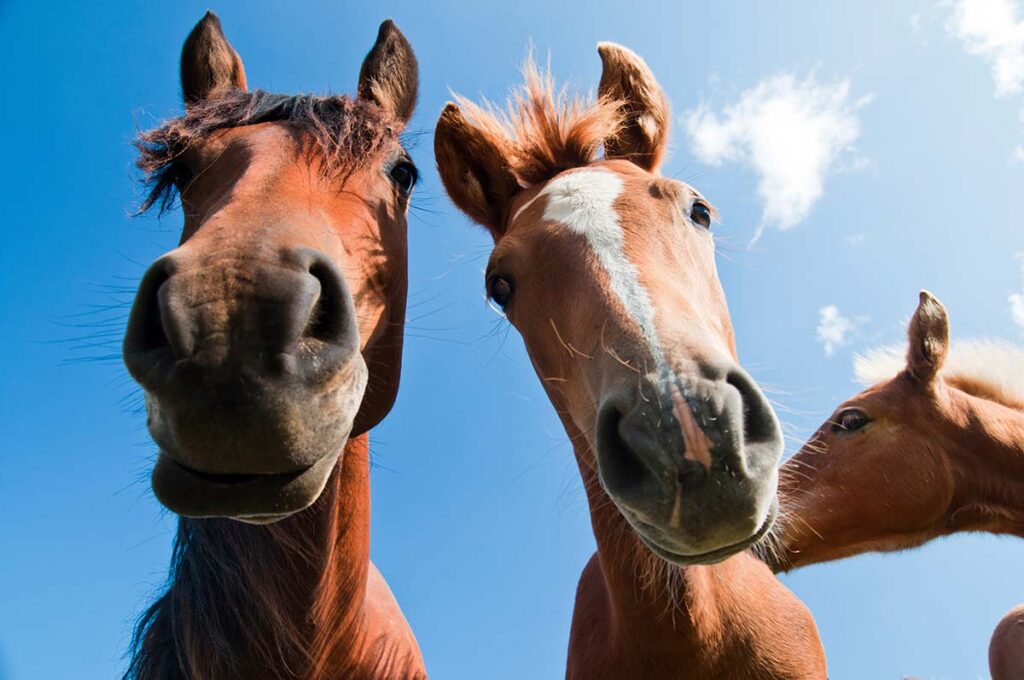Just like humans go to the dentist, horses should have their teeth examined by a veterinary dentist once a year (or twice for young horses). Horses’ teeth are wearing and grinding constantly. If they become uneven (and they do with time), horses can’t grasp, chew, and consume their food properly. If they become sharp, they can cut or cause ulcers to form on the horse’s inner cheek or tongue.
Equine Dental Anatomy
Horses are born with baby teeth that begin to shed during their 2-year-old year. The permanent teeth then grow in and continue to “erupt” throughout the horse’s life until no more reserve crown is left—typically when the horse is well into his 20s.

The horse’s approximately 40 teeth include the incisors at the front of the mouth, the canine teeth between the incisors and the premolars, the wolf teeth immediately in front of the cheek teeth, and the premolars and molars that make up those tightly wedged cheek teeth. When looking into a horse’s mouth, you can only see a small portion of each tooth. Most is below the gums, in the jawbone.
Equine Dental Terms to Know
When your veterinarian begins describing your horse’s oral anatomy—or what might be abnormal about it—you may feel as if you need an interpreter. Sure, some terms such as “overbite” and “underbite” correspond roughly with those in human dentistry and are easy enough to understand. But visualizing a “wave mouth” or a “step mouth” can be difficult. Even if your veterinarian helps you peer into your horse’s mouth, it can be tricky to recognize bite or wear abnormalities, particularly when they affect the teeth in the farthest reaches of the mouth. To help you become a better partner in your horse’s care, we’ve defined the most common equine dental terms and abnormalities. If you review them now, the next time your veterinarian visits for a dental exam, you’ll know exactly what he or she is talking about.
- Float—To file or rasp a horse’s teeth to balance out their chewing surfaces.
- Speculum—The device that opens a horse’s mouth during dental exams.
- Arcade—The top and bottom rows of teeth.
- Wolf teeth—A vestigial first premolar tooth that some horses have and some don’t. Usually, it must be removed to prevent bitting issues.
- Malocclusions—A bite that doesn’t align properly, such as an overbite (aka parrot mouth), underbite, or diagonal bite.
- Hooks—sharp protrusions that develop on teeth when an overbite, underbite, or other dental deformity causes an imperfect meeting of the top and bottom arcades. Most common on the upper first cheek tooth and lower last molar.
- Ramps—typically premolars with a surface that slopes like a ski jump. Ramps can cut or scrape the tongue or cheek, especially when a horse is bitted.
- Wave mouth—When the molars meet not in a straight line, but in a higher-and-lower fashion, producing the appearance of a wavy line when viewed from the side.
- Step mouth—When the premolars and molars form a stair-step configuration from front to back. This is primarily an abnormality of older horses.
- Shear mouth—a dental configuration in which the molars’ grinding surfaces are worn at a sharp 60- to 75-degree angle. Normally, the angle is 15 degrees.
Signs Your Horse Needs a Dental Exam

Signs that something’s wrong with your horse’s teeth include:
- Eating slowly
- Slobbering
- Head-tilting
- Quidding (leaving behind cigarlike wads of grass or hay)
- Dunking hay in water
- Passing long fibers in manure
- Fussing with the bit when ridden
- Weight loss
During a dental exam, the veterinarian will likely administer your horse a light sedative before evaluating his mouth using a speculum, light, and mirror. He or she will look for signs of tooth imbalance, ulceration, bruising, cuts, or pockets of infection. If the vet notices waves, steps, or sharp points, he or she will use a rasp to file down uneven or sharp tooth surfaces. Other, more intensive equine dental procedures include reducing overgrowths, correcting misalignments, extracting wolf teeth, and treating abscessed teeth, among others.
Take-Home Message
If you’ve just purchased a horse and you’re not sure whether he needs his teeth done (or you know they haven’t been floated in two or more years), then schedule a dental appointment with your veterinarian. In most states, only a licensed veterinarian can perform dental care on horses. The cost of routine annual dental care varies depending on the horse’s age and dental issues but can range from $100 to upward of $250.
Parts of this article originally ran on EQUUSMagazine.com.

